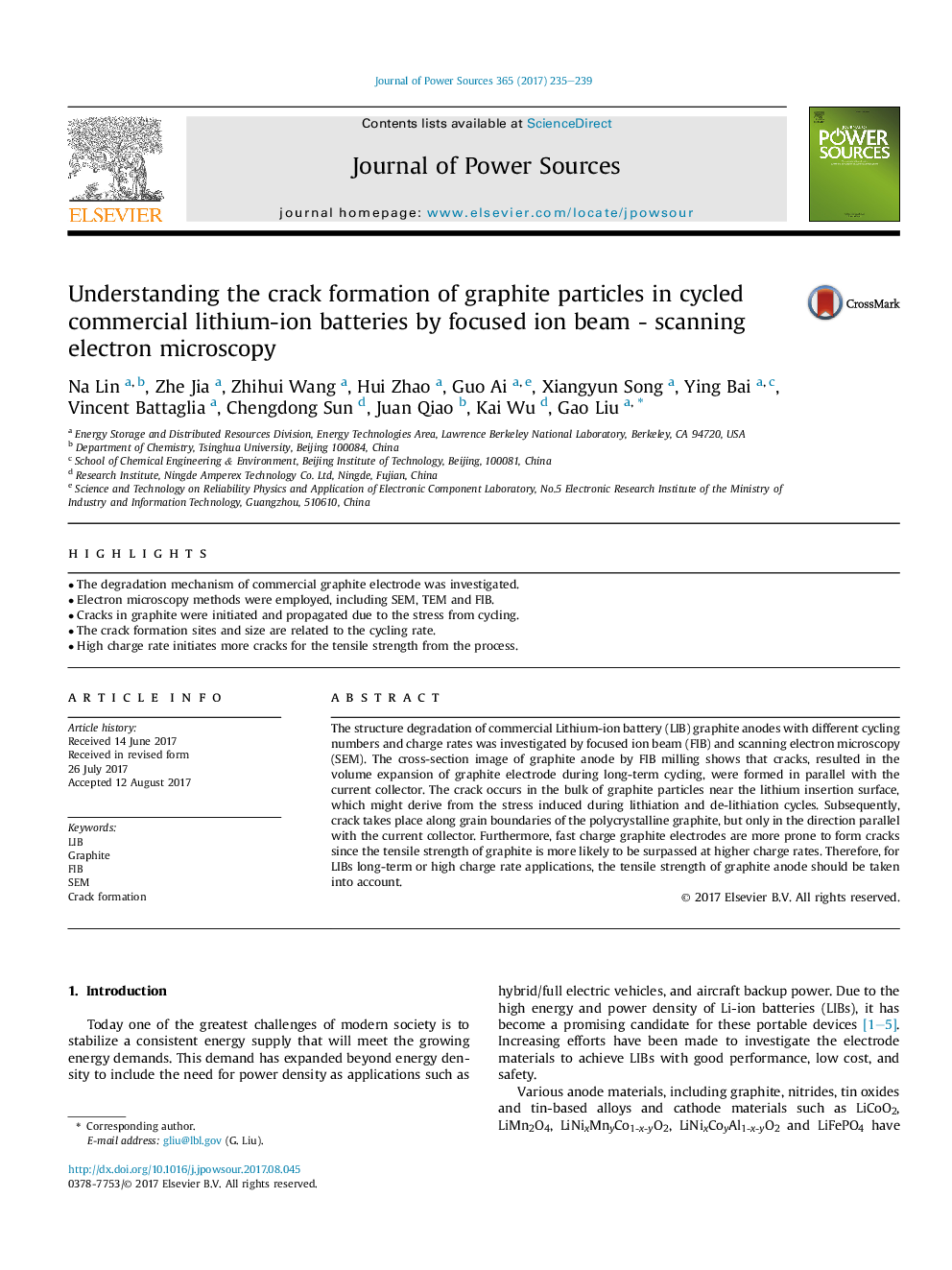| Article ID | Journal | Published Year | Pages | File Type |
|---|---|---|---|---|
| 5148753 | Journal of Power Sources | 2017 | 5 Pages |
Abstract
The structure degradation of commercial Lithium-ion battery (LIB) graphite anodes with different cycling numbers and charge rates was investigated by focused ion beam (FIB) and scanning electron microscopy (SEM). The cross-section image of graphite anode by FIB milling shows that cracks, resulted in the volume expansion of graphite electrode during long-term cycling, were formed in parallel with the current collector. The crack occurs in the bulk of graphite particles near the lithium insertion surface, which might derive from the stress induced during lithiation and de-lithiation cycles. Subsequently, crack takes place along grain boundaries of the polycrystalline graphite, but only in the direction parallel with the current collector. Furthermore, fast charge graphite electrodes are more prone to form cracks since the tensile strength of graphite is more likely to be surpassed at higher charge rates. Therefore, for LIBs long-term or high charge rate applications, the tensile strength of graphite anode should be taken into account.
Keywords
Related Topics
Physical Sciences and Engineering
Chemistry
Electrochemistry
Authors
Na Lin, Zhe Jia, Zhihui Wang, Hui Zhao, Guo Ai, Xiangyun Song, Ying Bai, Vincent Battaglia, Chengdong Sun, Juan Qiao, Kai Wu, Gao Liu,
